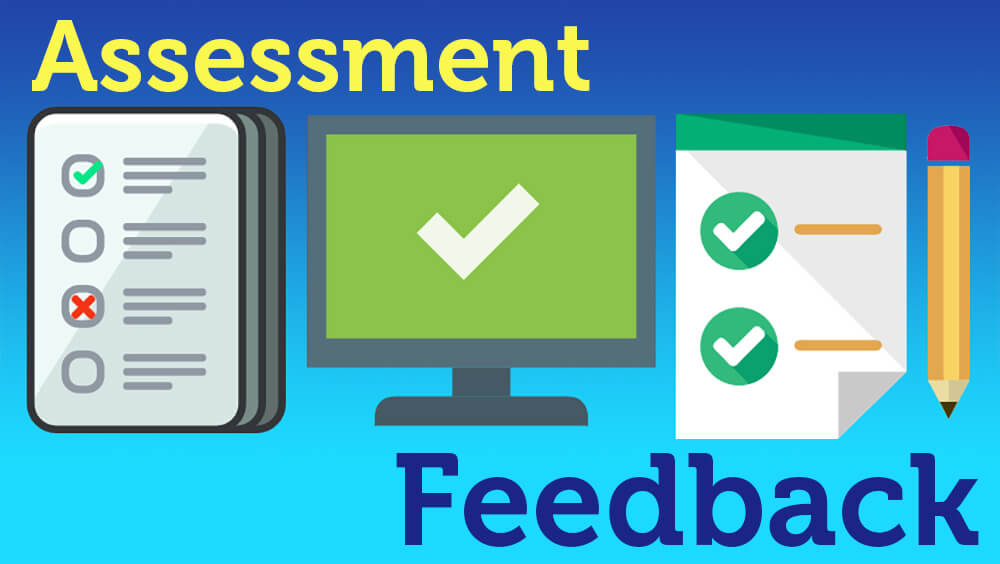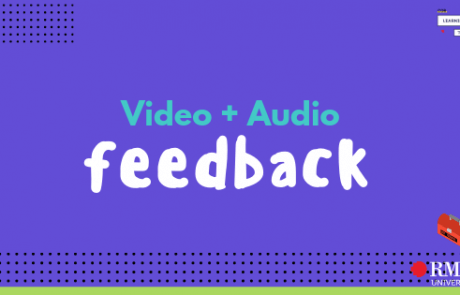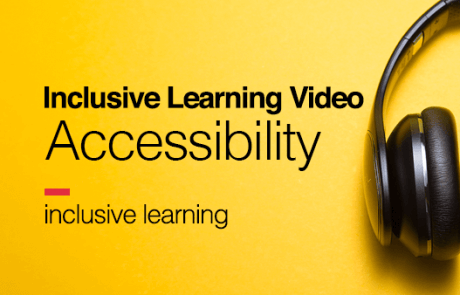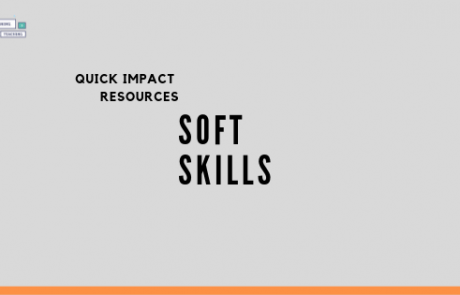
Feedback says to a student, “Somebody cared enough about my work to read it and think about it!” (Brookhart 2017, p.1). It can show students that the educator acknowledges their efforts and wants to help them improve.
In this post the ADG takes a look at how we can visually embed feedback and feed-forward strategies into our assessment feedback practice through the use of infographics in Canvas.
The ADG has developed two Canvas template pages to help you provide:
- assessment top tips information to your student cohort
- a feedback template to provide information back to students on the areas of success, and the areas for improvement at the completion of an assessment.
Assessment is a developmental process that fosters self-regulated learning; learners transform their mental abilities into academic skills. Students do not always perceive marking methods as feedback, therefore be explicit i.e. when talking about marking, make the word ‘feedback’ part of your vocabulary. When feedback is provided, students feel supported and guided in their learning.
Assessments are necessary for the educator to gauge student learning and the feedback on these assessments are vital for the student to deepen their learning and to identify any gaps in their knowledge. Assessment feedback can be viewed as outcome-oriented whereas feedback based on student’s thinking before providing answers in assessments can be viewed as process-oriented feedback (Gjerde, Padgett & Skinner 2017).
According to Gjerde, Padgett & Skinner 2017, feedback can be progressive focused i.e. based on student’s thinking before providing answers in assessments (process-oriented feedback). Feedback can also be outcome focused i.e. after submission of assessments (outcome-oriented feedback). Not only does process-oriented feedback have a greater positive impact on student performance, it also inspires student learning. Students are better equipped to identify any gaps in their knowledge before they submit an assessment.
Assessment feedback is conceptualised as a ‘feed-forward’ approach: future-focussed, action-oriented and used to improve student learning (Boud 2000). Effective feedback is provided to students with an understanding that they can use it to improve future work. Focus feedback on what students should continue doing and how they can improve on their future efforts.
Return feedback on in-course assessments within 10 working days of due date or extension date (RMIT University 2018, p. 8).
Top tips template
The top tips template has four areas where you can add tips for assessment success. Below is an example of a completed infographic.

Feedback template
The Feedback template in Canvas has space for three areas of success and three areas for improvement.

The templates can be added to any of your courses from the Canvas Commons. The ADG has developed a workbook to help you navigate to and install the Canvas feedback Module to your course.
Using the Canvas Top Tips & Feedback Templates – Video
References:
- Boud, D 2000, Sustainable assessment: Rethinking assessment for the learning society. Studies in Continuing Education, vol.22, no 2, pp 151- 167.
- Brookhart, SM 2017, How to give effective feedback to your students, 2nd edn, ASCD, Alexandria, USA.
- Gjerde, KP, Padgett MY & Skinner, DS 2017, ‘The impact of process vs. outcome feedback on student performance and perceptions’, International journal of the academic business world, vol. 13, no. 1, pp. 73-82.
- Lindstrom, G, Taylor, L & Weleschuk, A 2017, Guiding principles for assessment, Taylor institute guide series, University of Calgary, Calgary, viewed 14 March 2018, LINK
- RMIT University 2018, Assessment Processes February 2018, viewed 16 April 2018, LINK
L&T Tool Box
- Inviting a Guest Lecturer to your classroomadmin2018-11-19T13:39:34+11:00
Inviting a Guest Lecturer to your classroom














